A Guide To Ayurveda
| Estimated Reading Time: 9 minutes |
Highlights:
|
Your introductory guide to Ayurveda and the “Tridoshas”
The wisdom of Ayurveda has existed for thousands of years in the Indian subcontinent, but it was fairly recently when it grew quite popular in the West. In fact, due to its growing popularity, even medicinal science has started to look into the herbs and concoctions that Ayurveda has been using for millennia.
In the era of constant exposure to chemicals, harsh UV rays, and a lifestyle that involves looking at a screen most of the time, people all over the world are turning back to the guidance of nature to ensure their wellbeing is perhaps what has gotten people increasingly interested in Ayurved.This is perhaps what got you interested in Ayurveda too. However, a lot of Ayurvedic philosophymight be difficult to wrap your head around without context. This blog is written for people who want to be introduced to Ayurveda the right way so that they can use its wisdom to better their lives. Read on and begin your journey into incorporating a holistic system of healing into your lifestyle.

A brief history of Ayurveda
Did you know that Ayurveda is called the “oldest healing science” by many? Given that this science is ancient, it only makes sense to trace its history to understand it. Ayurvedic knowledge has its roots in India and dates back more than 5,000 years. “Ayurveda” belongs to a set of Vedas that existed in an ancient culture in the Indian subcontinent. This culture is often known as “Vedic culture”. In fact, Ayurveda is often linked to some Hindu mythology, and you may find interesting stories behind its origin depending on who you ask.
Generally, it is believed that the “Vedas” and “Upanishads” are texts that were passed on to saints on earth by God. Therefore, the primary writings of classical Ayurveda begin with descriptions of the passage of medicinal knowledge from gods to sages, and then to human doctors.
A vast body of knowledge in Ayurveda is said to have been passed down orally from masters to students. Therefore, only a little portion of Ayurvedic knowledge is preserved in writing. Some also trace a link between Ayurveda and other natural treatment systems such as Homeopathy. Presently, Ayurveda has been adapted for Western consumption through modernization and globalization.
What is Ayurveda?
The word Ayurveda can be broken down into two Sanskrit words: Ayur, which translates to “life” and Veda, which translates to “knowledge”. Thus, the meaning of Ayurveda, literally speaking, is the science of life. Ayurveda is a broad word that refers to a philosophy and science that concerns everything related to life. It is based on the idea that the relationship between the mind, the body, and the spirit must be balanced to attain optimal health and wellbeing. You will notice that the philosophy of this science is always grounded in nature itself. And though many may view Ayurveda as a medicinal system, it is broader than that. It also has a spiritual component, which is perhaps why it was so ahead of its time in establishing the relationship between the mind and the body.
Ayurveda, practically speaking, includes materials from the natural world to create remedies for any issues related to health and wellbeing. These typically include complex plant components, minerals, and metals. But the system goes beyond just medicines and also has ancient versions of surgical procedures such as kidney stone removal, rhinoplasty, etc. were taught in ancient Ayurvedic writings. For science this old, the advanced knowledge of Ayurveda is widely
respected and admired. Additionally, surgical procedures like rhinoplasty, kidney stone removal,sutures, and foreign object removal were taught in ancient Ayurvedic writings.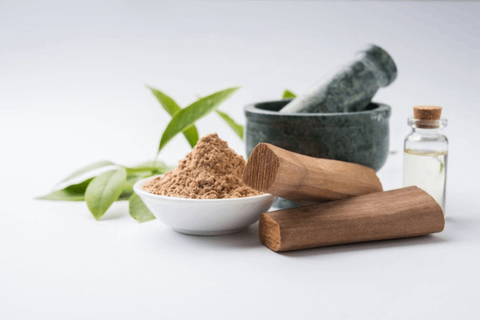
Philosophically speaking, Ayurveda emphasizes “prevention”, as the well-known saying “prevention is better than cure” goes. It promotes health maintenance by stressing the importance of “balance” in one's life through proper thinking, healthy food, an active lifestyle, and the use of herbal medicines. Thus, Ayurveda believes that developing the optimal balance between one’s body, mind, and consciousness is the key to an ideal lifestyle.
Doshas - How Ayurveda Customizes its Treatments According to Your Unique Issues. So far, we have been discussing the general philosophy, roots, and principles of Ayurveda. With an introduction to doshas, one understands how Ayurvedic philosophy applies itself to help people live an ideal lifestyle. According to Ayurveda, every person has a unique composition of “energies” in the form of natural elements (space, air, fire, water, and earth). In other words, we all have a distinct pattern of energy, which is made up of our unique blend of physical, mental, and emotional traits, much like everyone has a different fingerprint. This constitution is established at conception by various variables and is constant throughout an individual's lifetime.
Since people have different compositions of these natural elements, they have different needs.
To be optimally healthy, there must be a balance of these energies within a human being. To do this, people must alter their lifestyle to the best interest of their needs. However, as you may have guessed, people rarely have this balance. Ayurveda has a unique word to denote imbalance, called “doshas”. Since imbalance can be caused by problems in any of the five natural elements, we have different types of doshas that we as individuals suffer from.
Dosha balance is emphasized in Ayurvedic teachings, and it is seen as detrimental and likely to cause illness. The three basic doshas (known as the “Tridoshas”) of Vata, Pitta, and Kapha are described in Ayurvedic treatises. Ayurveda suggests that when these doshas are in harmony, people are well, whereas when they are out of balance, they become ill.
To understand doshas in more detail, let us understand the biochemistry behind them. In our body, energy is used to create movement so that fluids and nutrients reach our cells and allow our body to operate. Energy is also needed to lubricate and maintain the structure of the cell and body. Finally, it is energy that helps us digest the substances that give us nutrients and fluids. The energies of movement are known as Vata, the energies of digestion or metabolism are known as Pitta, and the energy that lubricates our body parts and cell structure is known as Kapha. All humans possess Vata, Pitta, and Kapha traits. However, in all of us - one is typically primary, one secondary, and the third least noticeable.
The five major elements of space, air, fire, water, and earth interact to create the entire cosmos.
These five elements are thus what combine and permute to create the Vata, Pitta, and Kapha doshas within us. Understanding the interaction between Vata, Pitta, and Kapha is essential to learning how to balance the body, mind, and consciousness. Now that we know the meaning of these doshas, let us discuss how their imbalances impact our physiology:
Vata (Air and Space)
Vata, which is made up of Space and Air, is the subtle energy connected to movement. It controls all motions such as breathing, blinking, muscle and tissue motion, and heartbeat. Psychologically, it is said that Vata encourages creativity and inventiveness when it is in balance. When imbalanced or aggravated, it causes worry and anxiety.
Some practices that can upset the Vata dosha include eating too soon after a meal, too much stress, grief, and staying up too late. People with a Vata - dominant constitution are said to typically have thin frames.
Dermatologically, a Vata Dosha imbalance is associated with dry skin and dry hair. To remedy this, oils rich in nutrients, such as sesame oil are recommended by Ayurveda to people with dry skin. Vata skin and hair types are also encouraged to use enriching herbs such as Ashwagandha, Bhringraj, and Shatavari in their Ayurvedic products. These herbs encourage growth and movement, enabling a balanced Vata.
Pitta (Fire and Water)
Pitta regulates the body's metabolic system and is composed of fire and water. Thus Pitta is involved in biochemical processes such as metabolism, nutrition, assimilation, digestion, and body temperature. Psychologically, Pitta is said to encourage comprehension and intelligence when it is optimally balanced. On the other hand, when the fiery cousin of the doshas is out of balance - it can cause rage, wrath, and jealousy.
Some causes of a Pitta dosha imbalance include heat, intense exertion, and overeating. Pitta is considered to be the dominant dosha in people who are intelligent and hardworking. They are said to have a medium physical build and a quick temper. Physically speaking, Pitta imbalance is associated with indigestion when this is out of balance.
Pitta dosha is often associated with sensitive skin. Any new ingredient used in a product may set off an imbalance in Pitta, triggering your metabolic system, creating heat, and irritating the skin. Therefore, skin-cooling oils, especially coconut oil are recommended for Pitta doshas. Herbs and plants that are rich in Vitamin C also work wonders in treating such skin. The Indian gooseberry, hibiscus flowers, and other skin-cooling natural ingredients are things to look for to treat an aggravated Pitta.
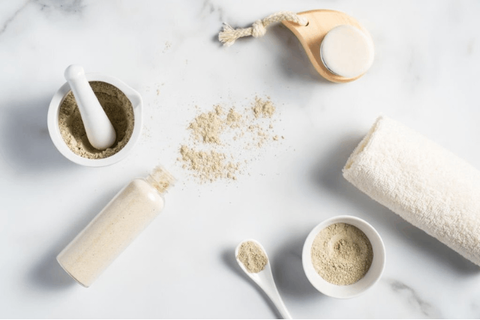
Kapha (Water and Earth)
While Vata and Pitta are concerned with bodily processes, Kapha is the energy that structures the body itself. It creates the "glue" that keeps the cells together. It is the combination of Earth and water through which it causes the structures of the body -bones, muscles, etc. It is also the energy source that does everything concerned with water in our body. Thus, it keeps immunity strong, lubricates joints, hydrates the skin, and so on.
Psychologically speaking, Kapha is associated with love, peace, and forgiveness when balanced. On the other hand, when it is imbalanced it may cause attachment issues and envy. Kapha may get disturbed by sleeping during the day, consuming too much sugar, or drinking a lot of salt or water. Kapha types are known to have strong physiques. They are centred, loyal,
and serene. Depression and weight gain can be the consequences of Kapha doshas.
An imbalanced Kapha dosha may cause oily skin and acne. The treatment recommended by Ayurveda for Kapha types is to engage in cleansing routines. For this, cleansing herbs such as Shikakai, Reetha, etc. are used. Oil-absorbing herbal soaps, face masks, and face washes made with an Ayurvedic composition can also be used to balance Kapha.
Parting Note
Ayurveda is the holistic science of life that concerns mental, physical, and spiritual wellbeing. Though it is thousands of years old, its philosophies remain to be quite resonating among folks looking for not just physical wellbeing but also spiritual meaning. Ayurvedic philosophies suggest that the three main doshas described in it don’t just affect your physical body, but also your moods and thoughts.
While the well-thought-out concoctions of herbs and oils may help you have a healthier physical body, adopting its philosophies may help you look a little deeper into your lifestyle. Knowledge about your dosha imbalance may help you lead the ideal lifestyle.
Recommended Products by Blue Nectar:
Kumkumadi Tailam Face Serum for Glowing Skin with Pure Sandalwood & Saffron
Shubhr Vitamin C Face Serum with Hyaluronic Acid for Dark Spot Correction and Glowing Skin
Shubhr Kumkumadi Skin Glow Oil | Body Polishing & Nourishing
Devtvakadi Ayurvedic Pain oil with Cinnamon and Clove
Nalpamaradi Thailam for Skin Brightening With Turmeric
Balalakashadi Jasmine Bath & Body Massage Oil | Skin Hydration & Relaxation





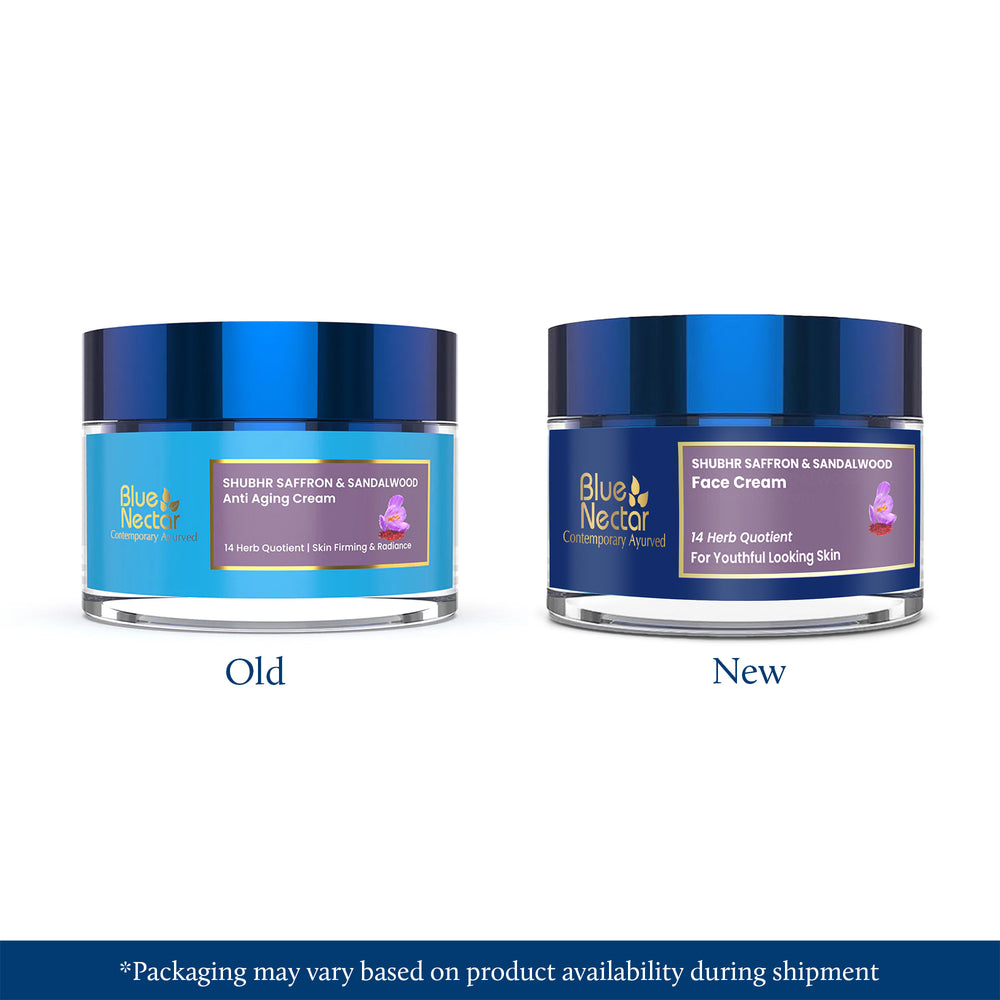



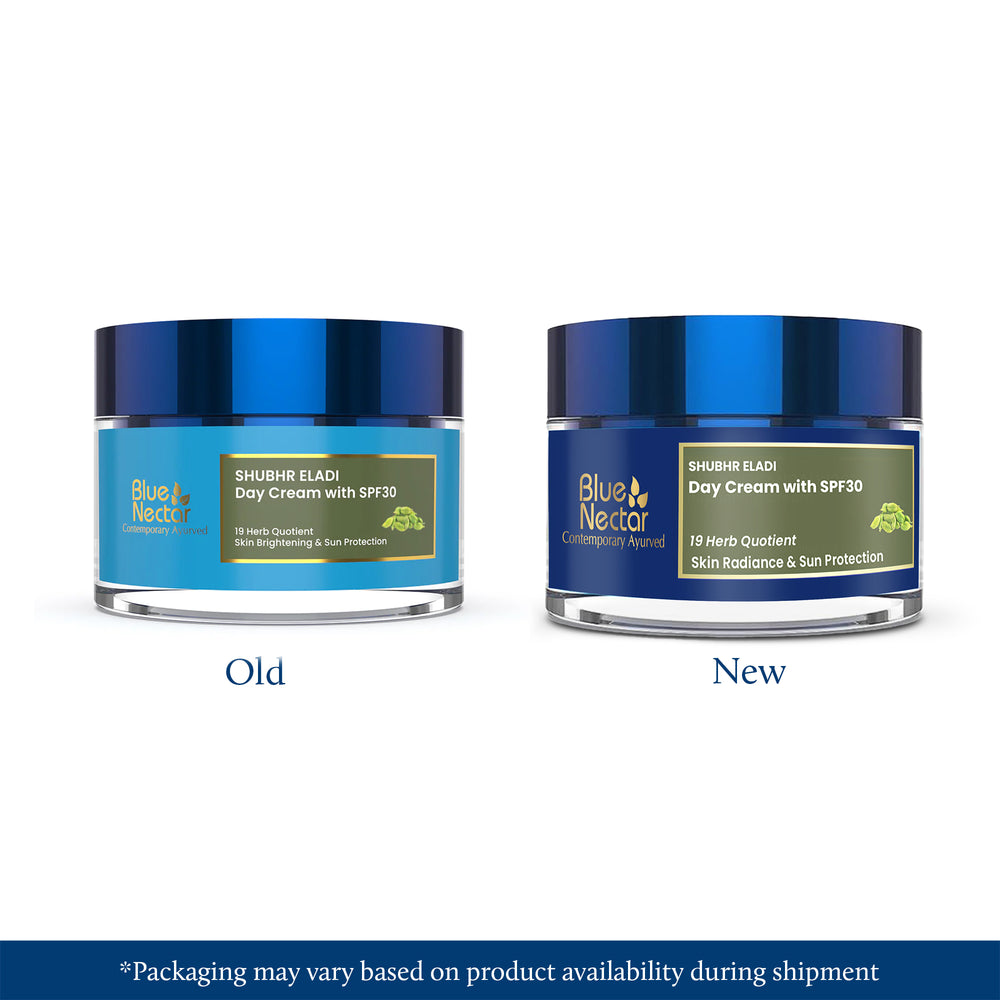

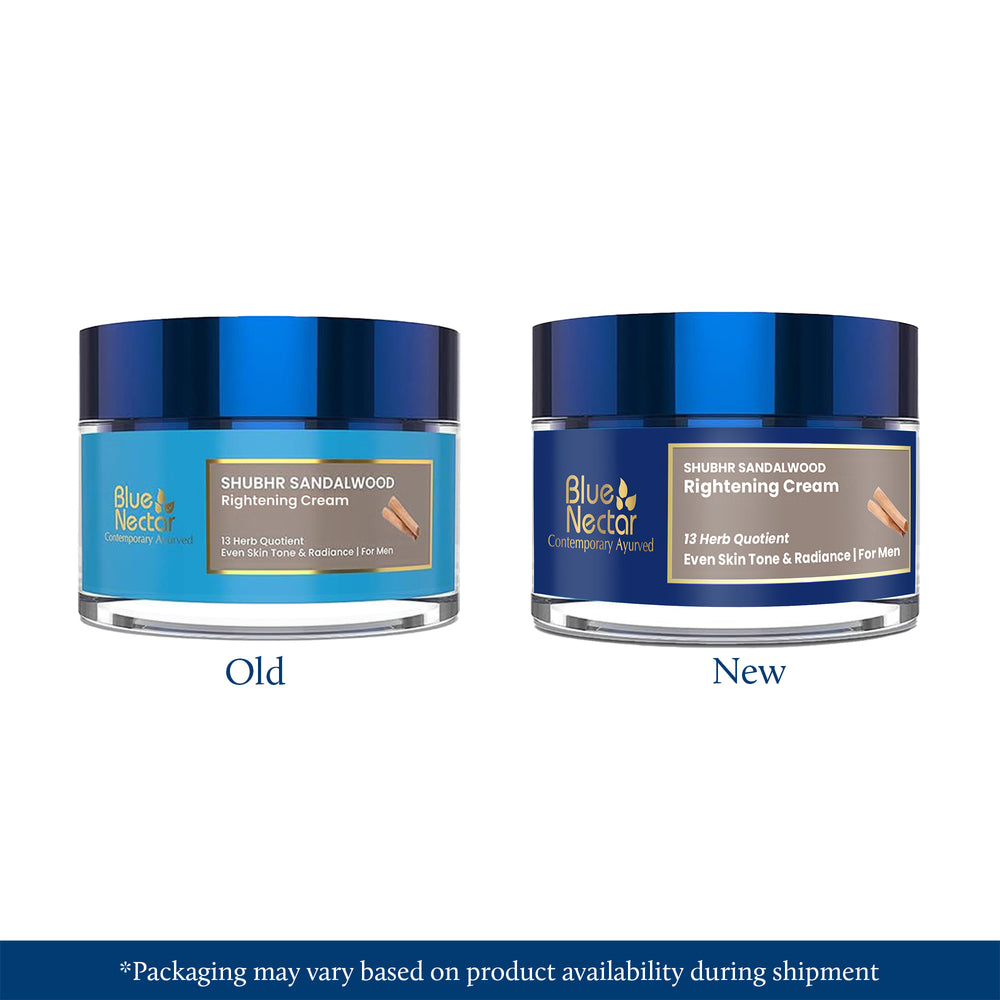




Leave a comment